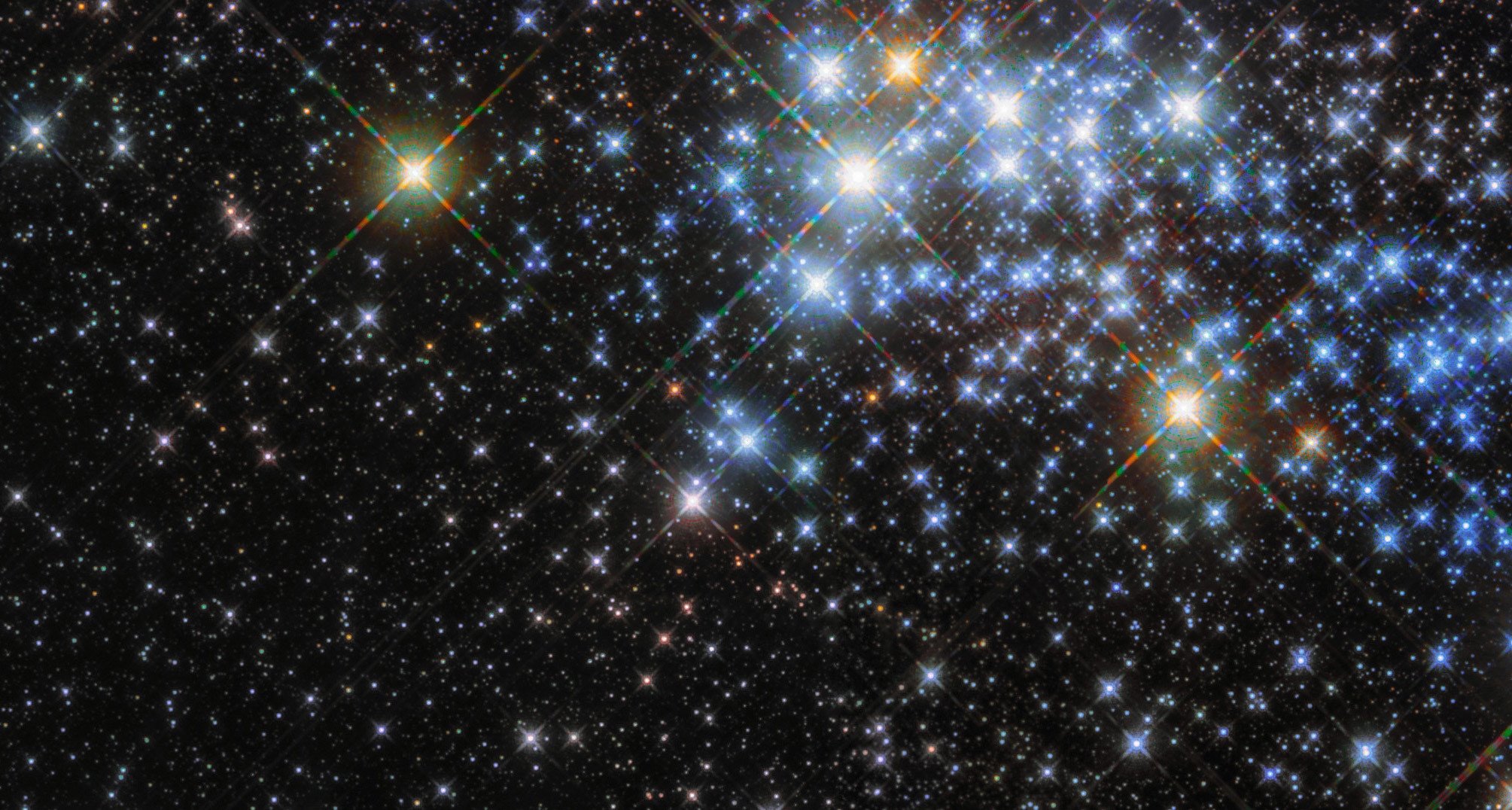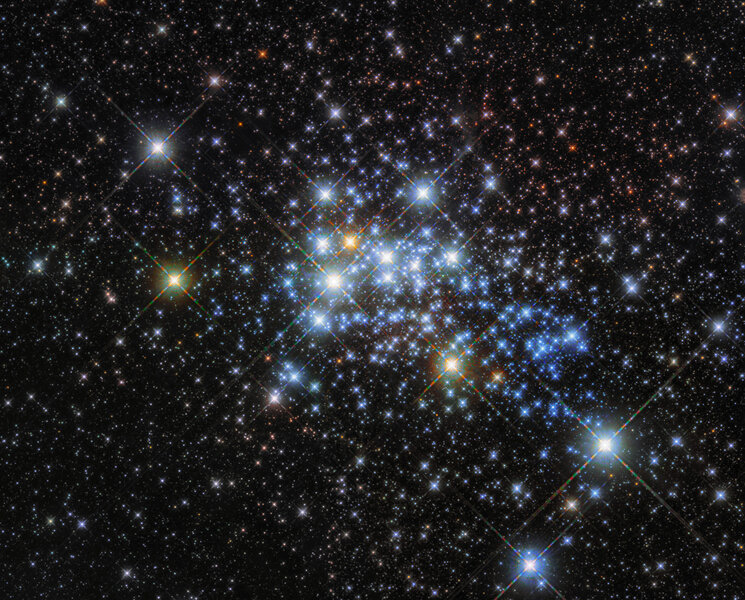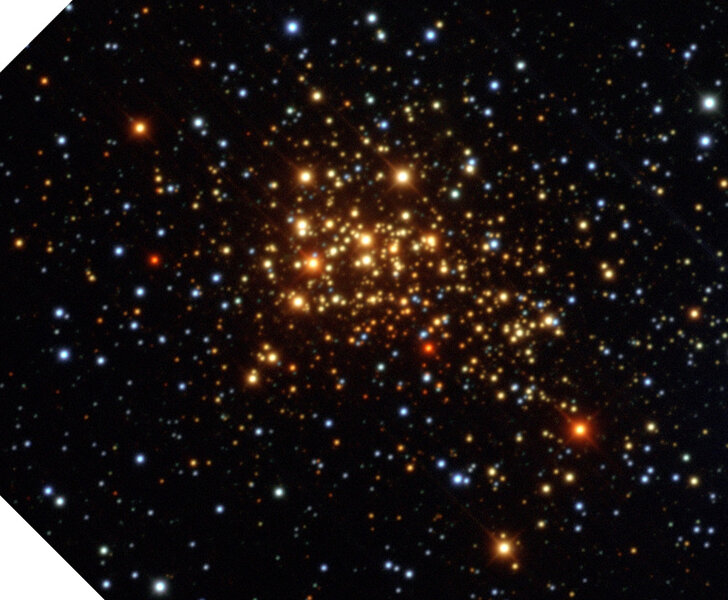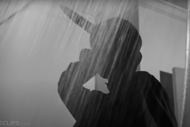Create a free profile to get unlimited access to exclusive videos, sweepstakes, and more!
The extinction of starlight

When you think of the word "extinction," you probably think of a species-ending event like an asteroid impact or catastrophic climate change (or maybe a Stargate movie that never got made).
When an astronomer thinks extinction, they think… dust.
Let me explain. Or better, let me show you:
That sparkling gorgeousity is Westerlund 1, a massive star cluster something like 15,000 light years away. As you can see in that image, taken by the Hubble Space Telescope, it has a vast number of stars in it. The brightest overwhelmingly appear to be blue, with just a few of them yellowish or red.
However, you have to be careful here! This image is not taken in "natural" colors, like the way our eyes see light. It's actually infrared, in wavelengths of light outside the range of the human eye. What is displayed here as blue is actually light at a wavelength of 1.25 microns, well outside the reddest color our eyes can see. Green is actually 1.39 microns, and red 1.6.
The view of Westerlund 1 changes dramatically when you use visible light to observe it. Like here:
That image was taken using the ground-based MPG/ESO 2.2 meter telescope in Chile. I rotated it to match the Hubble image (and cropped the sides to get approximately the same field of view from left to right; that's why the corners on the left are blank). Hubble sees fainter stars, so there are fewer in the visible light image, but that's not the only difference.
Look at the colors! Those bright blue stars suddenly appear red, don't they? And the red stars in the Hubble image look deeply red in the other. Why?
Westerlund 1 is in the constellation of Ara (the altar), which is right in the middle of the plane of our galaxy. The Milky Way is a flat disk, and we're in that disk, about halfway from the center to the edge. When we look toward the middle, we're looking right into the densest, thickest part of the galaxy, where there is a lot of gas and dust.
Dust, in this case, means tiny grains of silicate (rocky) material, and also long molecules made up of chains of carbon… which is very much like soot. That makes dust dark, and also means it can absorb and scatter a lot of the light from stars behind it. Blue light gets affected by dust much more than red light does, so a star that is actually blue will appear red if you're looking through a patch of dust to see it.
That's the case with Westerlund 1. There's so much dust between us and it that the light from it is greatly reduced and reddened. And by greatly, I do mean it: The brightness of the cluster is reduced by a factor of something like 20,000 times! If there were no dust in front of it, it would be easily visible to the naked eye, and be one of the most celebrated objects in the sky (though difficult to spot from northern latitudes; it's pretty far south in the sky).
And this is what astronomers mean by extinction. It's how much a star's light is dimmed by dust. It depends on the density of the dust (how many molecules or grains per cubic centimeter), how big the dust cloud is (the more dust we look through the more the light is extincted), and the color of the star (because again blue light is more strongly affected than red). If we want to truly understand what we're seeing when we observe an object, we have to account for extinction, or else we'll be misled by the object's colors.
As I read about the cluster the hairs on the back of my neck stood up. Westerlund 1 is home to no fewer than a half-dozen yellow hypergiants, among the most ridiculously luminous stars known. These blast out 300,000 times the Sun's energy; if you replaced the Sun with one of these hypergiants the Earth would last about a second before being cooked to a crisp (of course, hypergiants are so awesomely huge that if you replaced the Sun with one we'd be inside it, which is not my first choice of locations). Even at Westerlund 1's distance from us, each of these stars would be bright enough to see with just your eye if it weren't for the extinction.
It also has a lot of blue and red supergiants — massive stars nearing the ends of their lives, and will soon (well, in a million years or three) explode as supernovae — and Wolf-Rayet stars, again massive stars that violently shed their outer layers and will soon explode.
All of these stars are incredibly luminous. What this cluster must look like unobscured! Or from the inside… Westerlund 1 is roughly 10 light years wide. So a typical distance to one of those yellow hypergiants would be about five light years, and that means they would appear to be brighter than the full Moon in the sky! You could read by them! And if one were even closer the light would be so intense it could damage your eyes.
And, of course, if you're too close… pffffft. And that's before those stars start to explode.
Extinction indeed.
Dust clouds or not, I'm rather glad Westerlund 1 is 15,000 light years away. From that distance it does us no harm when these stars decide to go supernova, but it's close enough that we have a pretty good view of it either way. I can still wish the dust wasn't there, though, because my oh my, what a glorious sight that would be.
















